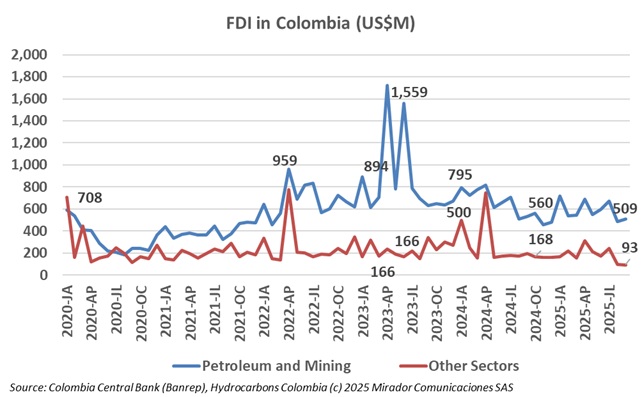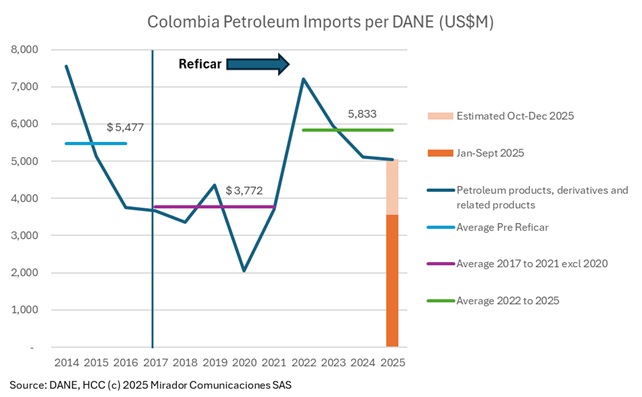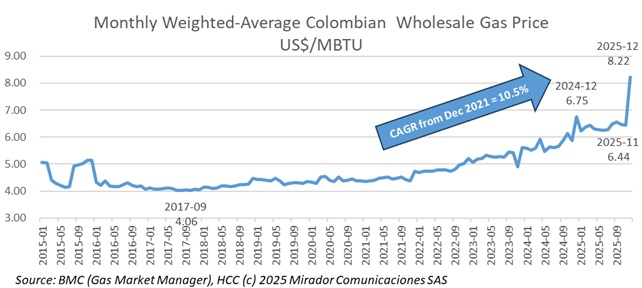President Gustavo Petro defended his government’s economic achievements while directly attributing Ecopetrol’s declining profits to the state oil company’s failure to adopt the energy transition he advocates.
Colombia’s exports totaled US$4.3B FOB in October 2025, declining 0.2% compared to October 2024, breaking the positive trend from September when the country reached its highest export value of the year, according to DANE.

Foreign Direct Investment (FDI) in Colombia has declined for two consecutive years, reflecting increased risk perception and deteriorating investment conditions. According to Banco de la República’s Balance of Payments data, accumulated FDI through the third quarter of 2025 reached US$6.969 billion, representing a 20% drop compared to US$8.671 billion in the same period of 2024.
The Unión Sindical Obrera (USO) called on November 28, 2025, for Colombia to develop experimental fracking pilot projects with “the highest oversight” to open possibilities for developing unconventional deposits as an effective short-term measure to increase oil and gas reserves.
The Petro government proposed eliminating unpopular taxes on alcoholic beverages, particularly beer, in exchange for reviving a previously struck-down measure prohibiting oil and mining companies from deducting royalties from their income tax.
Colombia’s Constitutional Court validated Decree 1275 of 2024, which recognizes indigenous peoples as environmental authorities within their territories, but established specific conditions for its application. The decree, signed by President Gustavo Petro and issued by the Ministry of Environment, responds to a demand from ancestral communities spanning more than three decades.

From the beginning President Gustavo Petro’s government seemed determined that Colombia would lose its self-sufficiency in fossil fuels. It appears to be accomplishing that goal, certainly in gas, and maybe in liquids as well.

The Colombian government, through the Ministry of Mines and Energy, announced an urgent package of measures to stabilize natural gas prices and protect residential users, small businesses, taxi drivers, and productive sectors dependent on this service.
President Gustavo Petro considers selling Ecopetrol’s Permian Basin assets essential for the company’s financial sustainability, but experts strongly disagree, viewing the move as both unviable and harmful to the stock.
The Ministry of Mines and Energy is working on a comprehensive update of the institutional framework to guarantee liquid fuel supply in Colombia. The initiative will be built on two main pillars: strengthening the legal and operational framework for fuel imports, and creating a Liquid Fuels Manager.